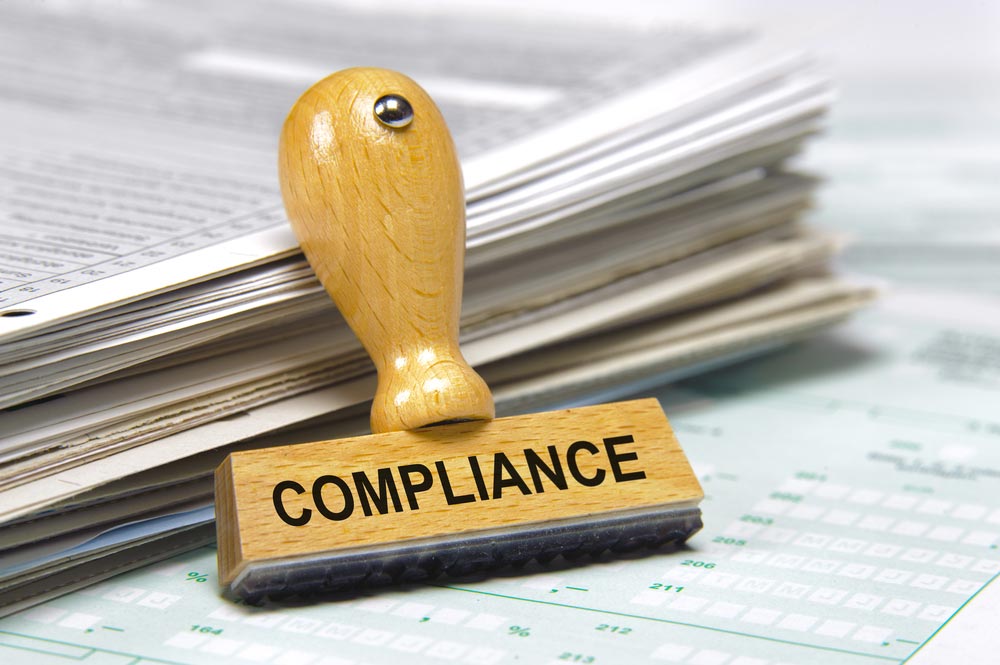So much is written about inbound call centers that it can be easy to overlook their outbound counterparts. But outbound call centers deserve their day in the sun, too, because they help organizations increase sales, improve collection rates, grow donations, perform market research, and proactively reach out to customers. When used appropriately, an outbound call center can be an effective tool for increasing both revenue and customer satisfaction.
If you're looking for an overview of outbound call centers, you're in the right place. This guide provides information about campaign types, KPIs, technology, compliance, and keys to success. Outbound call centers can be complex operations but knowing the basics will have you well on the way to becoming an expert.
What is an outbound call center?
An outbound call center is a customer service or sales operation that makes outgoing calls to customers or prospects. It's staffed with specially trained agents who work on-site, remotely, or may work for a business process outsourcer (BPO). Outbound call centers require unique technology, KPIs, and compliance requirements.
However, there are also call centers that are not dedicated to outbound interactions only – many contact centers today find that combining inbound interaction handling with proactive outbound activities in one organization provides many advantages – we will discuss those later in this post.
And remember that outbound interactions are not necessarily limited to voice calls only – at a time where digital transformation is an important topic for many call center managers and customer service executives, outbound digital channels such as email or SMS should also be considered as part of the channel mix a contact center uses to interact with their customers.
Types of outbound campaigns

1. Telemarketing
Telemarketing is essentially a way to market products and services one-on-one. An agent calls an existing customer or cold calls a prospect from a targeted list and tries to generate interest in the product or service. They do this by assessing the person's needs, creating some rapport, telling the prospect about the product or service, assessing interest levels, setting appointments, and hopefully turning the prospect into a qualified lead that the telesales team can contact and close.
2. Telesales
This often gets lumped in with telemarketing, but for many outbound call centers, telesales is a distinct function performed by a separate group of sales agents. Once the telemarketers have warmed up the leads and told them all about the products and services, skilled sales agents can take over and try to close some deals. Telesales agents benefit from having good lead lists because they are typically measured on conversion rates, a metric that compares the number of contacts with the number of sales.
3. Collections
Outbound call centers are heavily used for collections activities. Collections agents might call customers to remind them about a missed or upcoming payment or to help them structure a new repayment plan. The ultimate goal is to get people current on their debt obligations. Collections operations must comply with the Fair Debt Collection Practices Act, which protects consumers from abusive collections behaviors.
4. Donations
Have you ever received a call from a firefighter or police charity asking for a donation? That call came from an outbound call center. The operation can be as simple as a bunch of high school students calling alumni off paper lists to professional fundraisers using state of the art outbound technology. The goal is the same - maximize contributions. With so many nonprofits competing for donations, a well-orchestrated outbound campaign can substantially help organizations meet their fundraising goals.
5. Surveys
Outbound campaigns are a great way to measure the pulse of customers or the public at large. Here are some of the types of surveys outbound call centers can conduct.
- Customer satisfaction surveys. Organizations that don't have automated survey tools may use their outbound call centers to administer customer satisfaction (CSAT) surveys. This involves agents calling customers and asking them to rate their satisfaction with the company, recent purchases, their last customer service interaction, and more.
- Market research. You've likely been on the receiving end of market research calls, as well. These types of campaigns are frequently conducted by market research firms who want to publish studies about the latest consumer behaviors, attitudes, etc. However, individual businesses can also do their own market research, for example, to test out the appeal of new product ideas.
- Political polls. Outbound call centers are frequently engaged to help pollsters gather data about voter opinions on political issues and candidates. The data collected can be used, for example, to adjust political campaign messaging.
6. Proactive customer communications
Outbound campaigns can also be used for proactive communications that strengthen customer relationships or help contact centers to avoid a flood of incoming interactions by proactively reaching out to customers. For example, organizations can remind customers of upcoming appointments or notify them of event cancelations. The best dialers are equipped with features that enable making personalized agent-less outbound calls using an IVR or send out large quantities of emails and text messages.
These agent-less, proactive communications are extremely cost-effective, especially when you factor in the inbound calls they deflect; plus, many customers appreciate proactive outreach – I, for example love that my coffee pods provider reminds me when my supply runs low. Simply confirming a repeat order saves my time and ensures I don’t ever run out!
Key performance indicators

1. Connect rate
Connect rate measures the success of reaching a customer, lead, etc. It's calculated by dividing the number of successful connections (which may or may not include answering machine pickups) by the number of attempts. Higher connect rates are preferred because speaking to more people should lead to more sales, donations, and completed surveys.
2. Conversion rate
Conversion rate measures the success of calls by calculating the percent of connects that result in a qualified lead, sale, donation, etc. This is one of the most important outbound call center KPIs because it gets to the heart of their primary mission.
3. Average handle time
Average handle time (AHT) is the average amount of time agents spend on an individual call, which includes talk time, hold time, and post-call wrap time. AHT targets need to allow for enough time for agents to adequately execute their call objectives, but it also needs to be managed closely because it impacts labor efficiency and outbound call capacity.
4. Calls per agent and calls per day
Speaking of efficiency and capacity, calls per agent and calls per day are indicators of both. Outbound call centers are typically very focused on the number of calls they make in a given amount of time because there are often campaign deadlines that need to be met. Calls per day can help managers know if they're on track and calls per agent, when drilled down to the agent level, identifies specific agents who are struggling to hit their goals.
5. Abandon rate
Yes, outbound calls can be abandoned, too. It can happen when an outbound call center uses an auto-dialer. The outbound call counts as abandoned if either the customer hangs up before the connected call can be routed to an agent (True Abandon) or if the time before the call reaches an available agent exceeds the Abandon Rate Threshold even if the called party does not hang up. Call centers need to carefully manage abandon rates because there are regulations that govern how high they can be.
6. Hold times
Outbound call centers may monitor hold times, which is a measure of how much time customers spend in agent-initiated hold status. Hold times that are higher than target can degrade customer experience and often indicate issues that need investigation. For example, agents might be putting customers on hold because they don't know how to perform a particular step in the process, or perhaps because the system is unusually slow. Hold times should be available at the agent level for better troubleshooting as higher than expected hold times can be an indicator that additional agent training is needed.
7. Quality scores
Just like with inbound operations, outbound call centers should have rigorous quality management programs to ensure agents are performing according to standards and complying with applicable regulations. Quality analysts can also identify ways for individual agents to improve their performance and raise their conversion rates.
8. Occupancy rate
Occupancy rate is an efficiency metric that measures time spent on call-related activities versus being in an idle status. Outbound call centers should strive for an occupancy rate that keeps agents steadily busy without overwhelming them.
Technology

1. Dialer
There are several different types of dialers available that automate dialing. Organizations should choose the type that best fits their operational needs and compliance requirements. Here are some of the options.
- Predictive dialer. A predictive dialer is the most advanced dialer option. Predictive dialers predict when an agent will be available to handle her next call and dial several numbers before she's actually available. Predictive dialers use algorithms based on current call center data, like AHT and abandon rates, to determine how many numbers to dial, which means that this number can vary throughout the day. This is a great choice if productivity is a top priority, however outbound call centers that use predictive dialers need to keep a close eye on abandon rates.
- Progressive dialer. Progressive dialers automatically dial one number when an agent becomes available. Because a customer will be connected immediately with an agent, progressive dialers are a very customer-friendly option. However, they don't produce the same productivity levels as predictive dialers.
- Power dialer. Power dialers use a fixed calls-to-agent ratio to determine how many numbers to dial when an agent becomes available. This logic is different from progressive dialers, which only dial one number per available agent, and predictive dialers, which use a dynamic ratio and begin dialing before agents are available. Outbound call centers that use power dialers need to very closely manage abandon rates.
- Preview dialer. Preview dialers give more information and control to agents regarding the next number on the calling list. When an agent ends a call, the preview dialer first presents pertinent information about the next customer or prospect, allowing the agent to prepare for the call. Then, the agent can have the system dial the call or skip to the next one. Preview dialers are great for interactions that require more preparation and personalization.
2. Outbound IVR
Outbound IVRs can automate the distribution of large quantities of outbound, personalized communications. For example, they can push out appointment reminders or notifications of product recalls and do it more quickly and cost-effectively than a team of agents could. And because it's an IVR, those on the receiving end of the contact can interact with the system, possibly including the options to self-serve or be connected to an agent.
3. Call recording
Every outbound call center really should record all their calls. It provides a record of what was said during each call, is critical for quality management programs, and may be required for compliance purposes. Industry leading call recording software records both audio and agent screens, can mask sensitive information, and provides extensive retention options.
4. Quality management
Outbound operations can use quality management software to simplify the quality management process and drive more meaningful performance improvements. The best quality management software has features like customizable evaluation forms, evaluation and coaching workflows, and simplified dashboards that bring transparency to quality evaluation results. Even better, when quality management is made available to the agent within their contact handling interface, this reduces training needs and streamlines QM and training activities in one unified agent desktop.
5. Blended Call Center
Blended call centers use both inbound and outbound calls and train their agents to handle both interaction types. That way, they have greater flexibility with how they deploy their agents. For example, when there's a lull in inbound calls, the system will automatically route outbound calls to agents that usually handle inbound calls. Similarly, agents that usually handle outbound dialing campaigns can easily assist with answering calls when the inbound queues are too busy. This inbound/outbound blending capability leads to higher agent utilization and more efficient use of labor dollars. Advanced contact centers can even blend outbound dialing with inbound calls and digital interactions.
6. Reporting and analytics
You've probably noticed by now that outbound call centers are very data-driven operations. In order to closely manage all those KPIs, outbound call centers need flexible reporting and analytics tools that provide real-time data, highlight problem areas, and allow managers to slice and dice the data in a multitude of ways. This is critical for maximizing efficiency and results, as well as staying compliant.
Speaking of compliance...

But having said that, no outbound guide would be complete without some discussion of compliance issues. So here are some things you want to investigate.
1. Telephone Consumer Protection Act
The Telephone Consumer Protection Act (TCPA) of 1991 is designed to protect consumers from unwanted phone calls and harassment. It governs a variety of outbound call center areas, including automated dialers, dialing hours, internal and national do not call lists, prerecorded messages, disclosure of information to the call recipient, and much more. The TCPA has been amended through the years, so it's important to keep up to date with the latest requirements. More information can be found on the FCC website.
2. National Do Not Call Registry
An important outcome of the TCPA was the Do Not Call (DNC) Registry, which is a list of phone numbers that businesses can't dial for unsolicited marketing and sales calls. Non-sales call types, like debt collection and fundraising, are typically exempt from DNC restrictions. It's important for outbound call centers to use current DNC lists, as new numbers are added all the time.
3. All the usual call center regulations
Outbound call centers need to also abide by the same regulations as their inbound counterparts. This can include HIPAA, which is designed to protect personal health information, and PCI, which governs the security of credit card data. And there are plenty of federal and state laws about call recording to comply with.
4. Software with features that support compliance
The right software helps outbound call centers stay compliant and avoid costly fines. For example, sophisticated dialers can automatically check DNC lists and suppress numbers that shouldn't be dialed. Or proactive dialing can be switched to progressive or manual mode when abandon rates exceed the configured threshold and the call center is in danger of being out of compliance. These types of features help outbound call centers to deploy a dialer solution that adheres to their specific compliance requirements.
Keys to success for outbound call centers

1. Campaign plans
Every new campaign should be viewed as a project that will benefit from some basic project management techniques. Managers should:
- Set KPI targets - what are the targets for AHT, connect rate, calls per day, etc?
- Establish a timeline that includes start and end dates as well as interim milestones (for example, half the leads called by X date.)
- Create a staffing plan - how many agents will work on the campaign, what are their schedules, and what skills are needed?
- Nail down other details - script design, training plans, calling list, etc.
2. Good calling list
Having a good calling list is a critical key to success. Bad calling lists will result in inefficiencies as agents have to work their way through too many incorrect phone numbers or leads that are the wrong demographic for the product or survey. Lists can be purchased or come from your own customer database. When purchasing, try sampling the list first to assess quality. Additionally, outbound agents should update records as they go to make sure the data is cleaner for the next time you use the list. Or, even better, automate creating and updating dialing lists by using a solution that automatically pulls contact information, for example, from your CRM or another system of record and refreshes the data as your campaign progresses. This ensures that your agents always use fresh data for their outbound activities.
3. Dialer efficiency
As you may have noted during the dialer discussion, the different types of dialers have very different capabilities that ultimately impact efficiency and occupancy. For maximum productivity, predictive dialers can't be beat. They keep agents consistently busy and minimize idle time. Capabilities like answering machine detection also make dialers, and agents, more efficient.
4. Eliminate the pause
We're all familiar with the telltale pause at the beginning of telemarketing calls, and I'll bet most of us regularly hang up before the agent is even connected. This consumer behavior increases abandon rates and negatively impacts conversion rates. How can an agent make a sale or secure a donation when they don't even have an opportunity to talk to the prospect? And for those customers that don’t abandon as soon as they notice it’s an outbound call, how can you avoid annoying them by making them wait for an agent to finally greet them? An industry leading predictive dialer will eliminate the pause without sacrificing the efficiency gains that come from dialing more than one call per agent, and that often has a significant impact on results.
5. Agent ability and motivation
Outbound call centers can have pristine calling lists and the best technology on the market, but if the agents don't perform campaigns will fail. Agents need to be positioned for success, which starts with hiring the right people, providing them with high quality training, arming them with the best technical tools, and developing them throughout their tenure at the call center. Additionally, agents, especially sales agents, respond well to meaningful incentives, so outbound call centers should consider including perks and bonuses in their campaign plans.
How to find out more
NICE CXone is the leading cloud customer interaction platform—100% focused on helping inbound and outbound call centers achieve their goals. Our software suite includes NICE CXone Personal Connection, a patented proactive predictive dialer that generates more revenue and fewer hang-ups. Patented technology gets rid of the awkward pause at the beginning of outbound calls, which decreases customer hang-ups and sets the right tone for the interaction.
Our resource center and blog contain more thoughtful content about outbound call centers. For example:
Read a customer success story - CXone Personal Connection Helps Hoveround Realize Massive Efficiency Improvements and Cost Reductions
Watch a demo of our predictive dialer - More revenue and less hang-ups with CXone Personal Connection, a patented proactive dialer
Read more about managing outbound call centers - Outbound call centers - how to address common challenges




